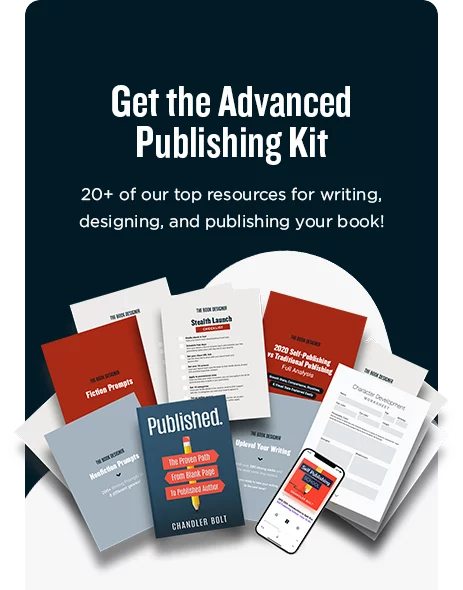Guest Authors Guidelines for TheBookDesigner.com
I welcome guest articles from any reader who would like to query me. Here are the guidelines I use for guest bloggers on The Book Designer:
- Original content only. This is part of my basic commitment to you. I don’t reprint articles from directories, from bloggers’ archives, or from other sources. You might find an article somewhere else that first appeared on this blog, but it has to be original to be considered.
- Authentic voice. I get a lot of articles submitted that are obviously turned out as “manufactured” content. They may have shreds of information in them, but they are formulaic, flat, and uninteresting to read. If you aren’t engaged with your content, how can you expect to engage readers?
- On topic. Articles that are on topic deal with writing, publishing and marketing books, with typography and book design, and with personal experiences doing one of these things.
- Relevant backlink. Yes, I will go and look at the site you want to link to from your post. That’s another commitment I make to my readers. Even if the article is on topic, if it’s leading readers to a site selling Florida vacation homes or online degrees, it won’t make the cut.
- Only two personal backlinks. You want to convince people you’re worth reading, not plant 10 links in your article all leading back to your blog. Please limit yourself to 2 backlinks to your own site, and one of those should be in your bio. Links to resources—whether your own or someone else’s—that amplify the article are usually fine, but we reserve the right to edit them as we see fit.
- 30 day exclusive. This requirement goes along with the need for original content. Please allow your article to remain in place here for 30 days before reposting it elsewhere. After that it’s your article to do with as you wish, although we always appreciate a link back to the original appearance here.
- Answer comments. This blog was built on interaction with readers. As a guest author, you will be expected to be available for questions from readers and further discussion in the comments, especially for the first 2 or 3 days of your post. Please use the “Subscribe to comments” option so you are notified when comments are left on your article.
- Appropriate length. “How long should my article be?” is the most common question I get from guest bloggers, and here’s my answer: most articles here run from 800 to 1,200 words. Your article should be a minimum of 500 words, and as long as it takes to deliver your message. If you can keep your writing interesting and informative, you can go long without worries
- Resources / Internal Links. I’m partial to articles that give readers resources to pursue on their own. Here at The Book Designer and our family of sites (see footer), we have hundreds, maybe even thousands of articles that are likely relevant to the topic you’re writing. Take the time to supply links to resources, whether they appear within your article, or in a “Resource” section at the end. Readers will love you for that.
- Make an approach. It’s easier to say yes to someone who suggests topics than it is to someone who asks “What should I write about?” The easiest way to do this is to say what your general topic is, then supply us with several headlines of proposed articles. This will also give you some headline-writing practice, and what blogger doesn’t need that?
- Formatting. I’m most concerned with the quality of your content, but how you format it can make a big difference in how long it takes to get your article online. Some notes:
- The easiest articles for us arrive already formatted for WordPress in HTML.
- Word files can be translated by WordPress, but there’s always code to clean up afterwards.
- Plain text files with <em>italic</em> and <strong>bold</strong> tags are easy to deal with, too, but don’t overuse them.
- Headlines on this blog use only the <h3>headline</h3> tags
- Please provide the full URL of anything you want to link to.
- Break it up. It’s more interesting to read articles that are punctuated by lists, bullets, block quotes and subheads.
- Put yourself out there. There’s something that makes writing compelling, that draws readers to your work: it’s when you put yourself into your article. Make us feel what you felt, tell a story from your experience, be honest about things you did that didn’t work out. However you do it, find a way to make it personal and authentic and you’ll be a success.
Follow these guidelines and email me at [email protected]. I look forward to hearing from you. If your article is accepted for publication, I will personally email you and you will be paid for your work.

